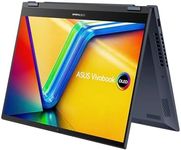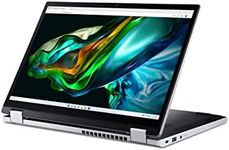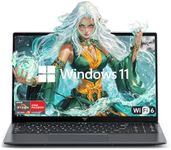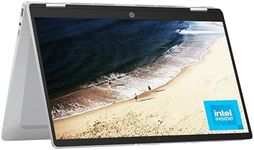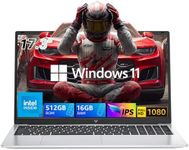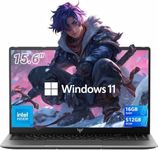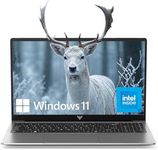Buying Guide for the Best 2 In 1 Laptops
Choosing a 2-in-1 laptop can be exciting because these devices combine the features of a laptop and a tablet, offering flexibility for work, creativity, and entertainment. When shopping for a 2-in-1, it's important to think about how you'll use it most—whether that's for note-taking, drawing, watching movies, or traditional computing tasks. Understanding the key specifications will help you find a model that fits your lifestyle and needs.Display Type and SizeThe display is central to the 2-in-1 experience because you'll be using it both as a laptop and a tablet. Display size typically ranges from around 11 inches to 15 inches. Smaller screens make the device more portable and easier to use as a tablet, while larger screens are better for multitasking and media consumption. Touchscreen quality is also important—look for responsive and bright screens, especially if you plan to use a stylus. Consider your main activities: if you travel a lot or want something lightweight, a smaller screen may be best; if you need more space for work or entertainment, a larger display could be preferable.
Hinge Mechanism2-in-1 laptops come in two main styles: convertible (with a 360-degree hinge) and detachable (where the keyboard can be removed). Convertibles are great if you want to quickly switch between laptop and tablet modes without worrying about losing parts, while detachables are lighter in tablet mode and can be more comfortable for drawing or reading. Think about how often you'll use each mode and whether you prefer the stability of a fixed hinge or the flexibility of a detachable keyboard.
Processor (CPU)The processor is the brain of your laptop and affects how smoothly it runs. Entry-level processors are fine for web browsing, streaming, and light office work. Mid-range processors handle multitasking and more demanding applications like photo editing. High-end processors are best for heavy multitasking, video editing, or gaming. Choose a processor that matches your typical tasks—if you mostly use basic apps, you don't need the most powerful option, but if you run demanding software, look for a stronger CPU.
RAM (Memory)RAM helps your laptop run multiple programs at once. 4GB is suitable for basic tasks like browsing and word processing. 8GB is a good middle ground for most users, allowing for smooth multitasking and some creative work. 16GB or more is ideal for heavy multitasking, professional creative work, or running virtual machines. Consider how many apps you use at once and whether you work with large files or complex programs.
Storage Type and CapacityStorage determines how much data, apps, and media you can keep on your device. Solid State Drives (SSD) are faster and more reliable than traditional hard drives, making them a better choice for 2-in-1 laptops. Storage capacity usually ranges from 128GB to 1TB or more. If you store lots of photos, videos, or large files, opt for higher capacity. If you mostly use cloud storage or stream content, a smaller SSD may be enough.
Battery LifeBattery life is crucial for a device meant to be portable and used in different modes. Battery life can range from a few hours to over 12 hours, depending on the model and usage. If you plan to use your 2-in-1 on the go, look for longer battery life. If you'll mostly use it plugged in, this may be less important. Think about your daily routine and how often you'll be away from a power outlet.
Weight and PortabilityWeight affects how comfortable the device is to carry and use as a tablet. Lighter models are easier to hold for long periods and better for travel, while heavier ones may offer larger screens or more features. If you plan to use your 2-in-1 mostly as a tablet or carry it often, prioritize lighter options. If it will stay on a desk most of the time, weight may be less of a concern.
Pen/Stylus SupportMany 2-in-1 laptops support pens or styluses, which are great for drawing, note-taking, or precise navigation. Some models include a stylus, while others require you to buy one separately. If you plan to use your device for creative work or handwritten notes, make sure it has good stylus support and check if the pen is included. If you don't need these features, this may not be a priority.
Ports and ConnectivityPorts allow you to connect accessories like USB drives, external monitors, or SD cards. Some 2-in-1s are very slim and have fewer ports, relying on adapters. Consider what devices you need to connect—if you use many accessories, look for models with more ports. If you mostly use wireless devices or cloud storage, fewer ports may be fine.

